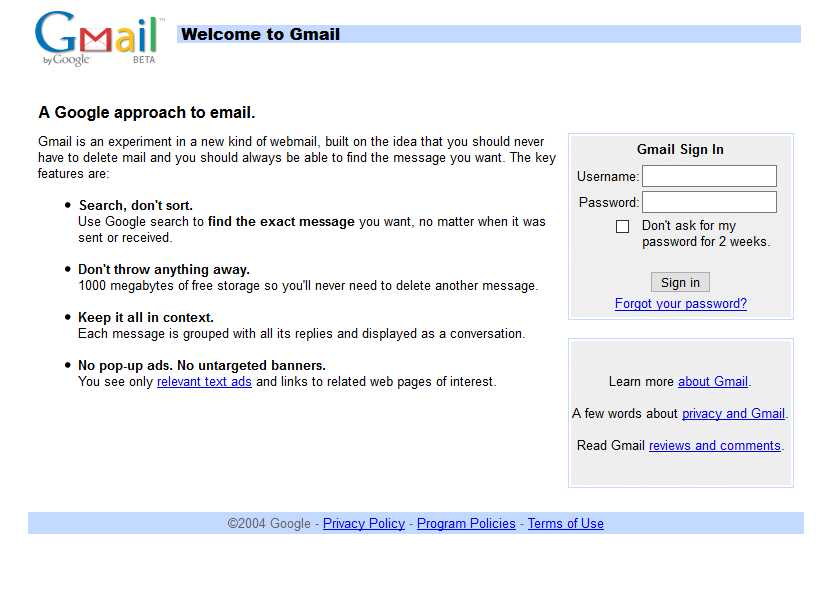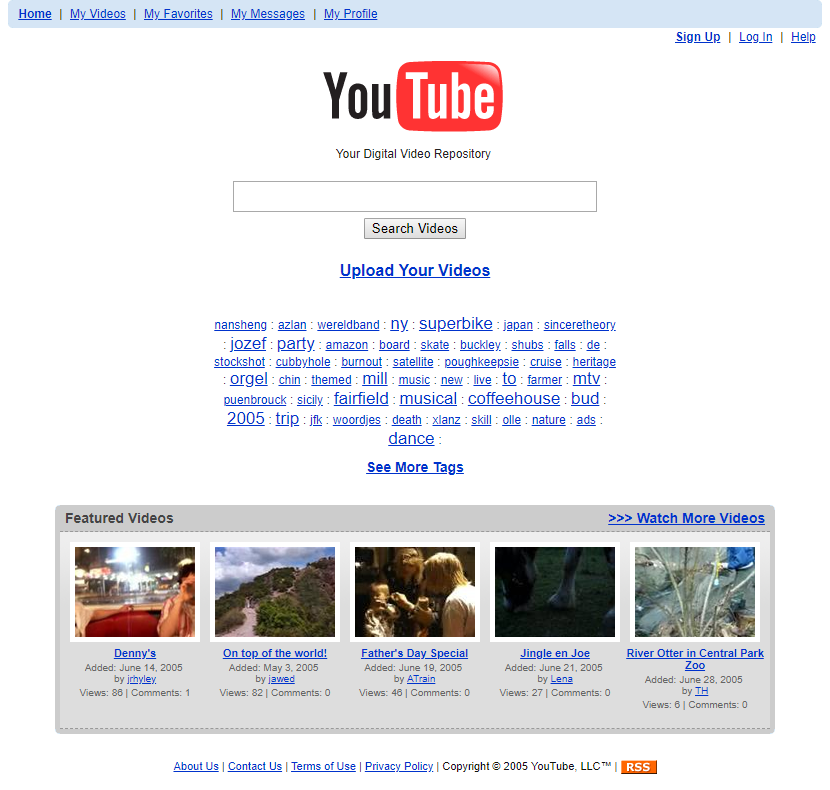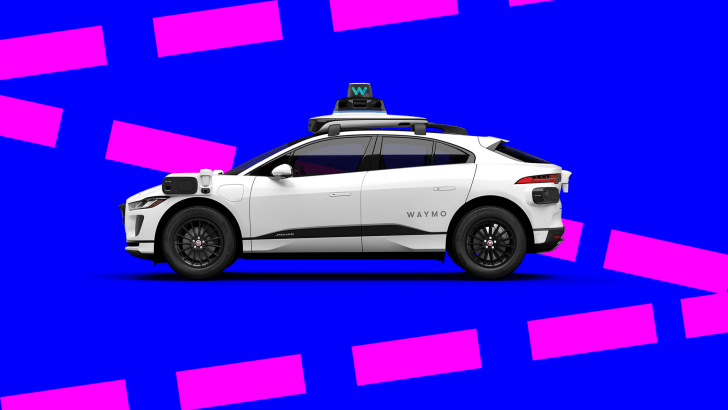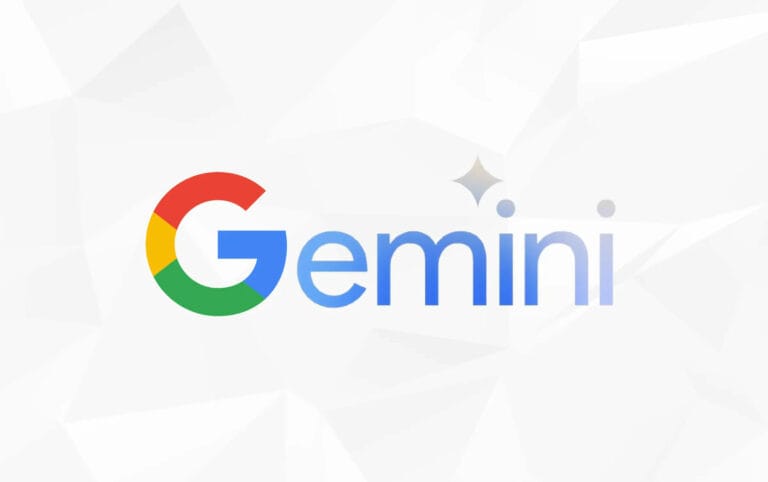Larry Page and Sergey Brin’s meeting at Stanford wasn’t just chance - it was the perfect environment for their collaboration. Stanford’s computer science program and Silicon Valley location provided the ideal backdrop for Google’s birth.
When Larry Page and Sergey Brin started Google in 1998, they weren’t just building a search engine. They were laying the foundation for a company that would reshape how we interact with information, technology, and the world around us.
Google’s growth coincided with the dotcom crash of 2000-2001. While this might seem unfortunate, it actually allowed Google to hire top talent from failed startups and buy cheap equipment from liquidated companies.
But Google’s path from a Stanford dorm room to global tech titan wasn’t a straight line. It was filled with unconventional decisions, lucky breaks, and a relentless drive to innovate.
The PageRank Revolution: Google’s Secret Sauce
Google wasn’t the first search engine, not by a long shot. But it was the first to truly understand the web’s structure and use it to deliver relevant results. The key? PageRank.
PageRank was Larry Page’s insight that a web page’s importance could be determined by the number and quality of links pointing to it. It was like academic citations for the web. This seemingly simple idea was revolutionary.
Here’s a simplified, educational version of how PageRank might work conceptually.
def calculate_pagerank(pages, damping_factor=0.85, epsilon=1e-8): n = len(pages) ranks = {page: 1/n for page in pages} # Initial equal distribution
while True: new_ranks = {} for page in pages: rank = (1 - damping_factor) / n for linking_page in pages: if page in pages[linking_page]: rank += damping_factor * ranks[linking_page] / len(pages[linking_page]) new_ranks[page] = rank
# Check for convergence if sum(abs(new_ranks[page] - ranks[page]) for page in pages) < epsilon: break ranks = new_ranks
return ranks
# Example usageweb_pages = { 'A': ['B', 'C'], 'B': ['C'], 'C': ['A']}
result = calculate_pagerank(web_pages)print(result)This algorithm gave Google a massive edge. While other search engines were easily gamed by keyword stuffing, Google’s results felt almost magically relevant.
Note: Google’s real PageRank algorithm is proprietary and much more complex. They’ve never publicly released the full details. The code I showed is a basic implementation of the PageRank concept, commonly used in computer science education to teach the principles behind PageRank.
The AdWords Gamble: Monetizing Search Without Selling Out
By 2000, Google was growing fast, but it wasn’t making money. The dot-com bubble had burst, and investors were getting nervous. Google needed a business model, fast.
The solution? AdWords. But here’s the twist - unlike other ad platforms, Google decided to rank ads based on relevance, not just the highest bidder. They called it the “Quality Score”
This was a huge gamble. They were potentially leaving money on the table. But it paid off big time. Users got relevant ads, advertisers got better ROI, and Google’s revenue skyrocketed.
Here’s a simplified example of how AdWords might calculate an ad’s position:
def calculate_ad_rank(bid, quality_score): return bid * quality_score
def determine_ad_positions(ads): ranked_ads = sorted(ads, key=lambda ad: calculate_ad_rank(ad['bid'], ad['quality_score']), reverse=True) return ranked_ads
# Example usageads = [ {'advertiser': 'A', 'bid': 2.0, 'quality_score': 8}, {'advertiser': 'B', 'bid': 4.0, 'quality_score': 3}, {'advertiser': 'C', 'bid': 1.0, 'quality_score': 10}]
ad_positions = determine_ad_positions(ads)for position, ad in enumerate(ad_positions, 1): print(f"Position {position}: Advertiser {ad['advertiser']}")This approach meant that a lower bid could still win top placement if the ad was highly relevant. It was a win-win-win for users, advertisers, and Google.
Note: The code above is a highly simplified, hypothetical example that I created based on general principles of how ad auctions are thought to work. Google’s real AdWords (now Google Ads) algorithm is proprietary and much more complex. The exact details are not public knowledge.
Gmail: Revolutionizing Email
In 2004, Google launched Gmail, a move that would revolutionize email services and showcase the company’s ability to innovate beyond search. Introduced on April 1st, many initially thought it was an April Fool’s joke, but Gmail was very real and about to change the game.

The most striking feature of Gmail at launch was its storage capacity. While most email services offered only a few megabytes, Gmail came out swinging with a whopping 1GB of storage. This was more than just a number; it represented a fundamental shift in how people could use email. No more deleting old messages or worrying about attachment sizes - Gmail made email feel unlimited.
But storage wasn’t the only innovation. Gmail introduced threaded conversations, making it easier to follow email chains, and brought Google’s powerful search capabilities to the inbox. These features leveraged Google’s core competencies and set a new standard for email usability.
Gmail’s business model was also revolutionary, albeit controversial at first. The service was free, supported by contextual advertising based on email content. While this raised privacy concerns initially, the model eventually became widely accepted and set the stage for many free, ad-supported online services to follow.
Over the years, Gmail has continued to evolve, introducing features like labels for better organization, priority inbox to manage email overload, and smart replies to speed up email composition. This continuous innovation has helped Gmail stay ahead of competitors and cement its place as a cornerstone of Google’s product ecosystem.
The success of Gmail demonstrated Google’s ability to enter established markets and disrupt them with innovative thinking. It also showed how Google could leverage its strengths in areas like storage infrastructure and search to create compelling new products beyond its original core business.
YouTube: Dominating Online Video
Google’s acquisition of YouTube in 2006 marked a pivotal moment in the company’s evolution, propelling it from a search and advertising giant to a major player in the world of online video and social media. The $1.65 billion purchase, just 18 months after YouTube’s founding, raised eyebrows at the time. Many questioned the wisdom of paying such a hefty sum for a company that had yet to turn a profit. However, Google’s foresight would soon prove to be nothing short of visionary.

Under Google’s wing, YouTube experienced explosive growth, rapidly becoming the world’s largest video-sharing platform. Google’s vast resources and technical expertise allowed for significant improvements in video quality, streaming capabilities, and overall user experience. The integration of YouTube with Google’s advertising ecosystem created a powerful new revenue stream, not just for Google, but for content creators as well. This symbiotic relationship between platform and creator would go on to spawn entire industries and career paths that simply didn’t exist before.
YouTube’s impact extended far beyond its role as a video hosting service. It became a cultural phenomenon, shaping internet culture and redefining entertainment, education, and social commentary. From viral videos and memes to educational content and citizen journalism, YouTube became a platform where anyone with a camera and an internet connection could potentially reach a global audience.
However, YouTube’s journey hasn’t been without challenges. As the platform grew, so did concerns about content moderation, copyright infringement, and the spread of misinformation. Google has had to continually adapt and refine its policies and algorithms to address these issues, walking a fine line between fostering free expression and maintaining a safe, lawful environment.
The acquisition and successful growth of YouTube demonstrated Google’s ability to identify promising technologies, successfully integrate them, and scale them to unprecedented levels. It also highlighted Google’s commitment to its mission of organizing the world’s information and making it universally accessible and useful. In this case, that information just happened to be in video form.
Today, YouTube stands as a testament to Google’s transformation from a search engine into a diverse tech giant. It’s a prime example of how Google has expanded its reach into various aspects of our digital lives, from how we find information to how we consume and create media.
Android: The Mobile Revolution
Google’s acquisition of Android in 2005 for an estimated $50 million was a strategic move that would reshape the mobile landscape. At the time, the smartphone market was in its infancy, dominated by BlackBerry and Windows Mobile, with Apple’s iPhone still two years away. Google, with its characteristic foresight, recognized that mobile would be the next frontier of the internet.
Android was designed as an open-source mobile operating system, a stark contrast to the closed ecosystems of its competitors. This approach allowed manufacturers to adopt and customize Android for their devices, leading to a diverse ecosystem of smartphones and tablets. Google’s strategy was clear: the more people using Android, the more people using Google’s services on mobile devices.
The first Android smartphone, the HTC Dream (also known as the T-Mobile G1), was released in 2008. From there, Android’s growth was meteoric. By making Android free for manufacturers to use, Google rapidly gained market share. This growth was further fueled by partnerships with major manufacturers like Samsung, LG, and Motorola, who saw Android as a way to compete with Apple’s iPhone.

Android’s success wasn’t just about market share; it was about bringing smartphones to the masses. While Apple’s iPhone targeted the high-end market, Android devices spanned the entire price spectrum, making smartphones accessible to a much wider audience, particularly in developing markets.
The Android ecosystem became a major revenue driver for Google. The Google Play Store, Android’s app marketplace, generated billions in revenue, while increased mobile usage drove Google’s core advertising business. Moreover, Android gave Google a platform to integrate its services deeply into users’ daily lives, from Google Search and Gmail to Google Maps and Google Assistant.
However, Android’s open nature also presented challenges. The fragmentation of the ecosystem, with different manufacturers using different versions of Android, created security concerns and inconsistent user experiences. Google has worked to address these issues through initiatives like Project Treble, which aims to make it easier for manufacturers to update their devices to the latest version of Android.
Today, Android powers over 2.5 billion active devices worldwide, making it the most widely used operating system on the planet. Its success underscores Google’s ability to anticipate technological shifts, execute bold strategies, and reshape entire industries. Android didn’t just secure Google’s place in the mobile era; it fundamentally changed how much of the world accesses and interacts with technology.
The “20% Time” Experiment: Fostering Innovation from Within
In the early 2000s, Google introduced a policy that would become legendary in Silicon Valley: “20% time.” Engineers were encouraged to spend 20% of their work time on projects that interested them, even if they weren’t part of their official duties.
This wasn’t just a feel-good policy. It led to the creation of some of Google’s most important products:
- Gmail (2004)
- Google News (2002)
- AdSense (2003)
- Google Maps (2005)
20% time wasn’t without its critics. Some argued it led to a proliferation of half-baked projects. But its impact on Google’s culture of innovation is undeniable.
The Moonshot Factory: X and the Art of Thinking Big
In 2010, Google took its culture of innovation to a new level with the creation of Google X (now just “X”). This “moonshot factory” was tasked with tackling huge problems and developing radical new technologies.
Some of X’s projects seemed almost comically ambitious:
- Self-driving cars
- Delivery drones
- Internet-beaming balloons
- Glass that could display information (Google Glass)
While not all of these projects have become commercial successes, they’ve pushed the boundaries of what’s possible and positioned Google as a leader in emerging technologies.
Google Glass
Not all of Google’s ambitious projects have been successes. Google Glass, unveiled in 2012, stands as a prime example of the company’s willingness to take big risks - and its ability to learn from failure. This wearable computer, shaped like a pair of eyeglasses, promised to bring augmented reality to the masses. Users could see digital information overlaid on the real world, take photos, and access the internet hands-free.

Despite the initial hype and its futuristic appeal, Google Glass faced numerous challenges. Privacy concerns arose over its ability to record video discreetly. The device’s high price tag ($1,500 at launch) put it out of reach for most consumers. Perhaps most damagingly, it quickly became a symbol of tech elitism, with wearers dubbed “Glassholes” in popular culture.
By 2015, Google had pulled Glass from the consumer market. However, true to its innovative spirit, Google didn’t abandon the concept entirely. They pivoted, refocusing Glass for enterprise applications where it found more success in fields like healthcare and manufacturing.
The Glass experiment exemplifies Google’s “moonshot” philosophy: the willingness to take big, potentially transformative bets, even at the risk of public failure. It also demonstrates the company’s agility in learning from setbacks and redirecting resources when necessary. While Glass didn’t revolutionize consumer tech as hoped, the lessons learned have undoubtedly informed Google’s approach to subsequent projects in augmented reality and wearable technology.
The Alphabet Restructure
In 2015, Google made a move that surprised many: it restructured itself into a holding company called Alphabet. Google became a subsidiary, alongside other companies like X, Verily (life sciences), and Calico (longevity research).
This wasn’t just a paper shuffle. It was a strategic move to:
- Give different businesses more autonomy
- Provide more financial transparency
- Allow Google to focus on its core products
- Protect moonshot projects from short-term profit pressures
The restructure was a sign that Google was no longer just a search company. It was positioning itself as a multi-industry innovator.
Waymo: Google’s Self-Driving Gambit
Among Google’s ambitious “moonshot” projects, Waymo stands out as one of the most promising and potentially transformative. Born from Google’s self-driving car project in 2009, Waymo became a separate company under the Alphabet umbrella in 2016. This move signaled Google’s serious intent to revolutionize transportation.

Waymo’s journey hasn’t been without its bumps in the road. The technical challenges of creating truly autonomous vehicles proved more complex than initially anticipated. Early prototypes, with their distinctive bubble-like appearance and rooftop sensors, were often the subject of curiosity and sometimes ridicule. However, Google’s deep pockets and long-term vision allowed the project to weather early skepticism and technical hurdles.
As the technology matured, Waymo began public trials in Phoenix, Arizona, offering ride-hailing services with autonomous vehicles. These real-world tests provided invaluable data and helped refine the technology. They also highlighted the complex regulatory and ethical questions surrounding self-driving cars, from liability issues to the impact on employment in the transportation sector.
Waymo’s progress has positioned it as a leader in the autonomous vehicle space, competing with traditional automakers and other tech giants. The company’s approach - focusing on developing the core self-driving technology rather than manufacturing vehicles - allows for flexibility in partnering with established car makers.
While fully autonomous vehicles aren’t yet commonplace on our roads, Waymo’s efforts have significantly advanced the field. The project exemplifies Google’s willingness to invest in long-term, high-risk ventures that have the potential to reshape entire industries.
Whether Waymo ultimately succeeds in making self-driving cars a reality for the masses remains to be seen, but its impact on the future of transportation is already undeniable.
Gemini
In late 2023, Google introduced Gemini, its most advanced AI model to date. Positioned as a competitor to OpenAI’s GPT models and Anthropic’s Claude, Gemini represents Google’s push to stay at the forefront of artificial intelligence.

Gemini’s launch was met with both excitement and skepticism. While Google touted its multimodal capabilities and impressive benchmarks, some in the tech community questioned the real-world performance and the transparency of the demonstrations.
As of early 2024, it’s still too early to definitively assess Gemini’s impact or compare its capabilities to other leading AI models. The AI landscape is rapidly evolving, with each major player continuously updating and improving their offerings. Google faces the challenge of translating its AI research prowess into products that can compete in an increasingly crowded market.
What’s clear is that Google sees AI as essential to its future. With Gemini, the company is betting big on its ability to innovate in this space. However, Google’s late entry into the generative AI race has left it playing catch-up to some extent, highlighting the challenges of maintaining leadership in the fast-paced tech world.
The development of Gemini also underscores a broader shift in the tech industry. AI is no longer just a tool to enhance existing products; it’s becoming a central focus for major tech companies, with the potential to reshape entire business models and user experiences.
As the AI field continues to advance, Google’s success with Gemini will likely play a significant role in shaping the company’s future direction and its position in the tech landscape.
Hidden Gems: Lesser-Known Stories from Google’s History
While Google’s big moves make headlines, some of its most interesting stories fly under the radar. Here are a few tales that showcase Google’s unique culture and approach:
The Burning Man Logo
For years, Google had a tradition of changing its logo for holidays and special events. But the very first Google Doodle wasn’t for a holiday at all. In August 1998, Larry and Sergey were heading to the Burning Man festival. To let users know they’d be out of the office (and unable to fix any server crashes), they added the festival’s stick figure logo behind the second ‘o’ in Google.
This playful approach to their homepage became a defining feature of Google’s brand, with Doodles now celebrating everything from scientific achievements to cultural milestones.
Google’s Near-Miss Sale
In 1999, Google was still a small startup. Larry and Sergey tried to sell it to Excite (a popular portal at the time) for $1 million. Excite’s CEO, George Bell, turned them down. They lowered the price to $750,000. Still no deal.
Imagine an alternate timeline where that deal went through. Would Excite be the tech giant instead of Google? It’s a reminder of how close Google came to being just another footnote in tech history.
The Highest-Stakes Spelling Bee
When Google was looking to hire its first VP of Engineering, Larry and Sergey interviewed Urs Hölzle. During the interview, they challenged him to spell “Dijkstra” (as in Edsger Dijkstra, the famous computer scientist). Urs nailed it, got the job, and went on to play a essential role in scaling Google’s infrastructure.
This quirky interview tactic speaks volumes about Google’s early culture. They weren’t just looking for technical skills, but for people who shared their deep passion for computer science.
The Secret Meaning of Google’s Name
Most people know that “Google” is a play on “googol,” the mathematical term for 1 followed by 100 zeros. But there’s more to the story. The domain “googol.com” was already taken. So they decided to use a misspelling. But it wasn’t random.
The name “Google” can be seen as a combination of “Go ogle,” as in “go look at this.” It’s a subtle nod to the company’s mission of organizing the world’s information and making it universally accessible and useful.
The Google Playbook: Lessons for Entrepreneurs and Leaders
- Think 10x: Don’t just improve things incrementally. Aim for order-of-magnitude improvements.
- User First, Monetization Second: Focus on creating amazing products. If users love it, you’ll find a way to monetize.
- Embrace Uncertainty: Many of Google’s biggest successes came from experiments and side projects.
- Data-Driven Decision Making: Use data to inform decisions, but don’t be afraid to trust your instincts for big bets.
- Culture Matters: Google’s success is as much about its culture of innovation as it is about any single product.
- Long-Term Thinking: Be willing to invest in projects that might not pay off for years.
- Solve Big Problems: Tackling significant challenges attracts top talent and can lead to unexpected breakthroughs.
Google’s journey is far from over. As it enters its third decade, it faces new challenges:
- Regulatory Scrutiny: Google’s size and market power have attracted attention from regulators worldwide.
- Privacy Concerns: As a company built on data, Google must navigate increasing concerns about data privacy.
- Competition in AI: Google faces stiff competition from companies like OpenAI and Microsoft.